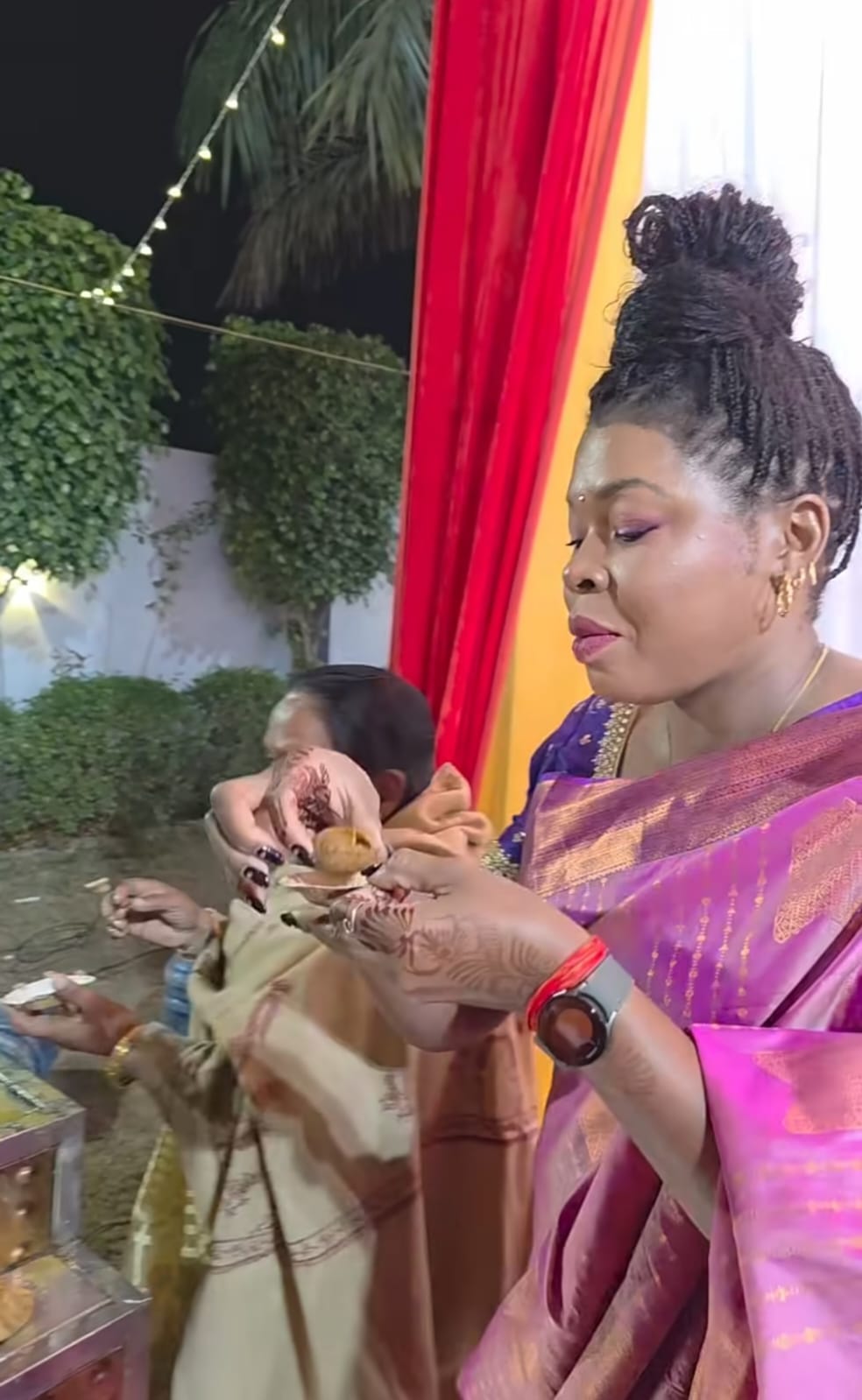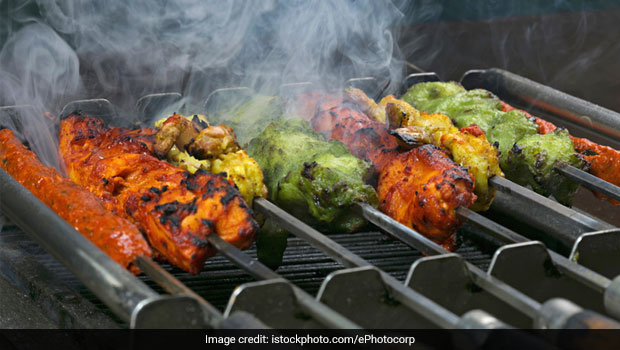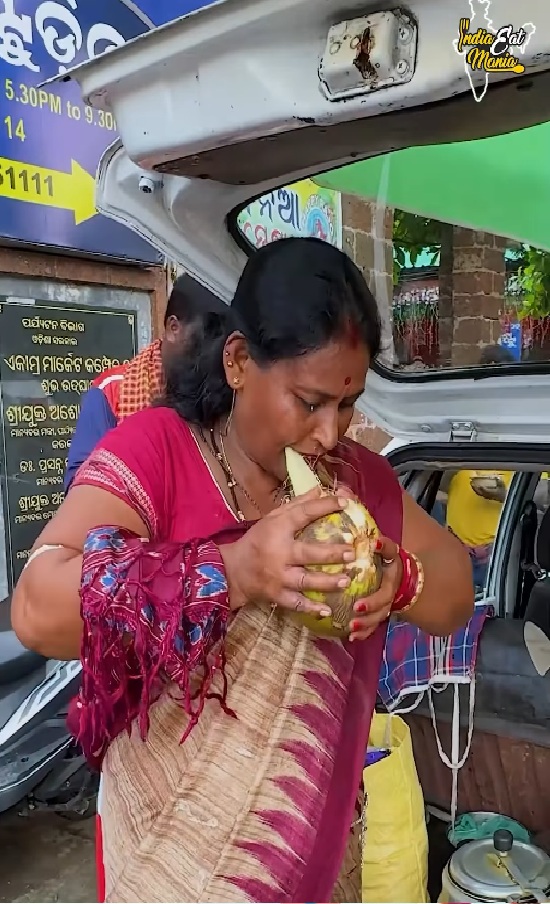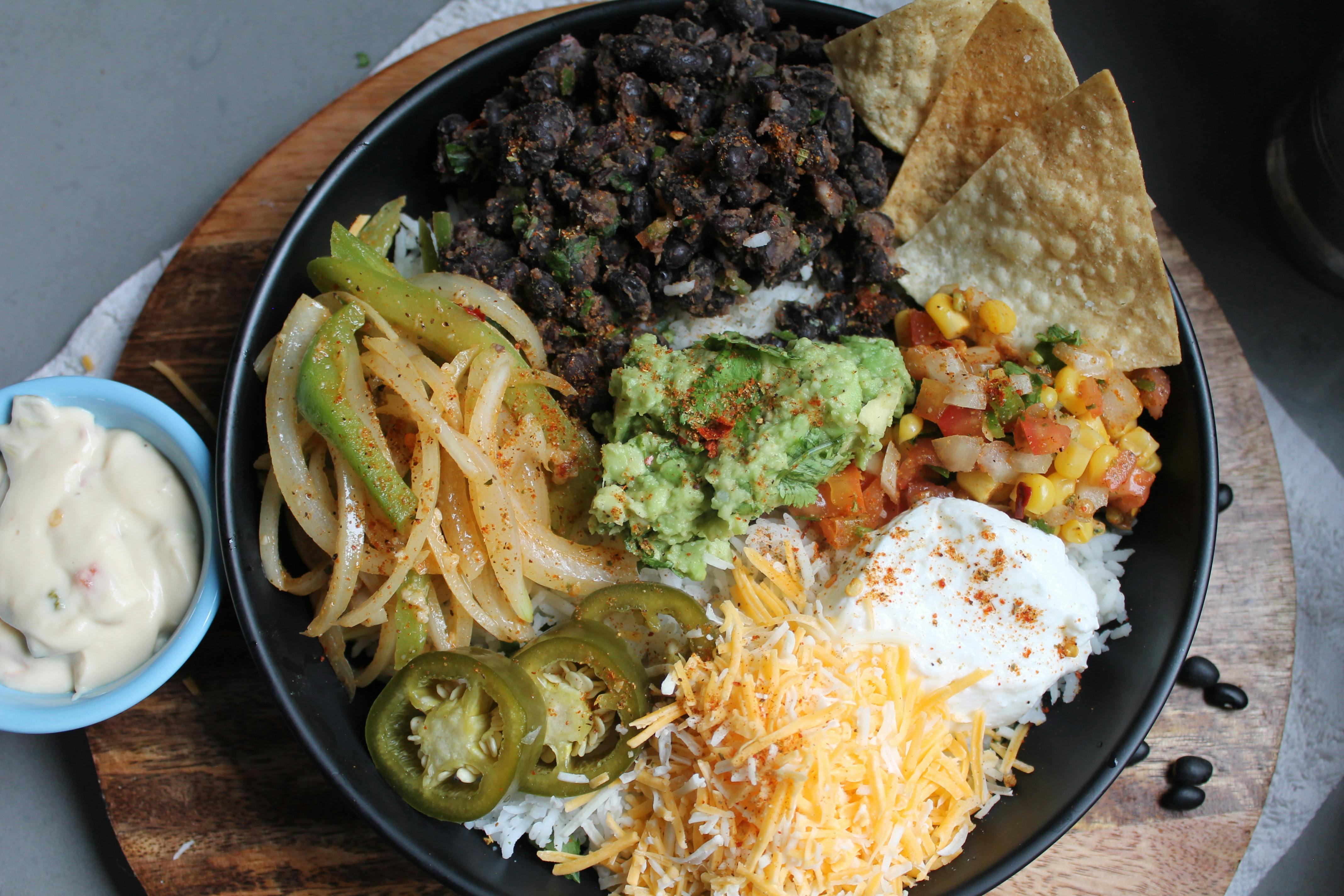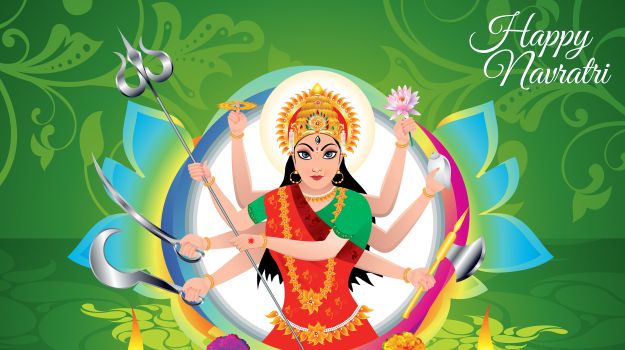A ring of dancers swirl feverishly round and round a glittering maidan. The ladies, bedecked in shimmering chaniya cholis, dip and twirl and clap their hands to the throb of the drum, their skirts spinning into rainbow blurs. The gentlemen, clad in their traditional kedia dhoti or kurta pyjama, flock to display their plumage, surreptitiously trying to catch the eye of the beauty next to them. At one end of the compound is a stage, on which a band fires away, the singer belting out the latest garba tunes. It is the Hindu month of Ashvin, time for Navratri. This year, it comes round from the 1st to the 10th of October.As a little girl, the one part of school I looked forward to intensely (other than the holidays) was the Navratri celebration. Come September and the swelter of the monsoon would ebb, the temperature dipping gingerly. An excited gaggle of school children would gather in the slate-coloured school compound, all lit up with sparkling fairy lights, and gambol with more energy than grace. Naturally, the next day would be a holiday.Today, with my school days long past me, Navratri is still one of the few festivals I get excited about. My inner feminist revels in the fact that this is a festival dedicated entirely to the powerful supreme mother Goddess, in her various incarnations. She is worshipped as Maa Durga (the invincible mother of the universe), Goddess Lakshmi (the bringer of wealth, both spiritual and material) and Saraswati (the goddess of wisdom) and each of Navratri's nine days are dedicated to these incarnations. Usually celebrated in the months of September or October, Navratri harks back to the time when the Goddess did penance to gain enough strength to slay the incorrigible demon Mahishasura. It is at the end of the penance, on Vijayadashmi, that he was eventually destroyed.
In honour of the goddess, a lamp is kept lit throughout the nine days and offerings of flowers and consecrated food are made. One of the most popular rituals followed is that of kanya, kanjak or kumarika puja, in which young girls (ideally, nine girls) are celebrated. This happens on the eighth or ninth day, when the girls are fed goodies such as halwa-puriand their feet are washed.
Swirling Around IndiaAlthough Navratri is celebrated across India with tremendous fervour, it is Gujarat which has held it closest to its heart. This devotion is woven through the fabric of its iconic Navratri dance - the garba - in which women dance round a lamp or an earthenware pot (garbo). The revolving dancers represent the ceaseless circle of life and death while the pot is a symbolic representation of the mother goddess. It is said that the rhythmic clapping is a way of invoking and thanking the goddess for ridding the world of evil. The dandiya ras (dance with sticks) was historically the rhythmic re-enactment of the fight between the goddess and the demon, and is performed in Durga Maa's honour. Enthusiasts can get in the groove in Vadodara, Ahmedabad, Surat and Rajkot.Mumbai too hosts some of the biggest Navratri hotspots. It is here that Navratri queen Falguni Pathak sings her heart out. It is here too, that you may spot the hottest Bollywood celebrity twinkling away on an elaborate stage.West Bengal celebrates the last few days of the festival as Durga Puja, a time when the state is drenched in pujo fanfare - a scatter of pandals, beautifully decorated statues of the goddess and much mishtieverywhere. But seven days before Durga Puja comes Mahalaya, when the arrival of the goddess is feted with the chanting of shlokas and the beating of drums.

Celebrations are more subdued elsewhere in India. For instance, in Tamil Nadu, it is Goddess Shakti who is celebrated as part of the Batukamma Panduga festival, in which decorative towers of flowers are crafted; they also celebrate golu, the festival of dolls, which is again an ode to the goddesses. Women gift each other flowers, jewellery and betel nuts, leaves and coconuts. In Madhya Pradesh, devotees bathe in the sacred Shipra river and exchange sweets while in Ujjain, the beautiful Harsiddhi Mandir glows with lamps. In Delhi and parts of Punjab, devotees fast and perform special pujas called Mata ki Chowki.Food for the GodsSynonymous with the fun and frolic is the fasting (vrat). Typically, Hindu bastions frown upon a litany of foods during Navratri – meat, onion, garlic, certain grains, lentils, turmeric, asafoetida, mustard, fenugreek seeds, garam masala and dhania powder are all condemned. The faithful multitudes use fasts for purifying the self and paying obeisance to a higher Truth. Many just have fruit, milk and sago (sabudana)."This is the perfect time for an inward cleansing and discipline, both physical and mental," says my Gujarati neighbour, Sarla Kapadia. "It is that time of the year when I bring out the energy-giving sabudana – crisp Sabudana Vada and steaming Sabudana Khichdi – which is very popular in my household. I also make a Suran ni Khichdi (sweet potato khichdi) and Singhara ni Barfi. My kids also love the traditional Kuttu Puris that I serve with dahi."

Meanwhile, my cousins in Chennai tell me of the delicious sundal menu that is prepared for guests - chickpeas, green gram, dry green peas, sweet corn and cowpeas are some of the traditional Navratri offerings. Madhur Mhamankar, my Maharashtrian friend, has a few generations-old dishes that she prepares for the vrat. "My family has always prepared Sweet Potato Halwa. Sometimes, we also make Papaya Halwa. Potato, yam and sweet potato chips are naturally popular with my little son but I also make healthier options like Sabudana Thalipeeth and fruit chaat."All this culminates in Dusshera's festivities and feasting, the perfect end to Navratri's abstinence.Disclaimer:The opinions expressed within this article are the personal opinions of the author. NDTV is not responsible for the accuracy, completeness, suitability, or validity of any information on this article. All information is provided on an as-is basis. The information, facts or opinions appearing in the article do not reflect the views of NDTV and NDTV does not assume any responsibility or liability for the same.
In honour of the goddess, a lamp is kept lit throughout the nine days and offerings of flowers and consecrated food are made. One of the most popular rituals followed is that of kanya, kanjak or kumarika puja, in which young girls (ideally, nine girls) are celebrated. This happens on the eighth or ninth day, when the girls are fed goodies such as halwa-puriand their feet are washed.
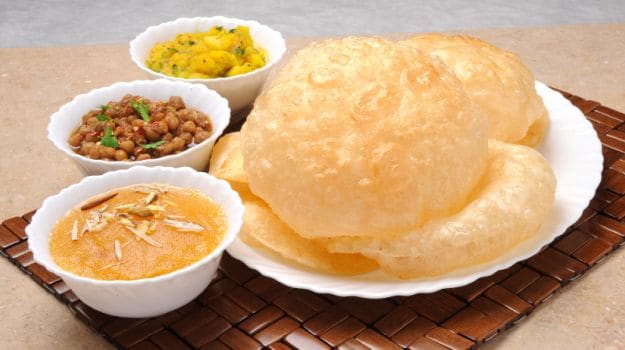
Swirling Around IndiaAlthough Navratri is celebrated across India with tremendous fervour, it is Gujarat which has held it closest to its heart. This devotion is woven through the fabric of its iconic Navratri dance - the garba - in which women dance round a lamp or an earthenware pot (garbo). The revolving dancers represent the ceaseless circle of life and death while the pot is a symbolic representation of the mother goddess. It is said that the rhythmic clapping is a way of invoking and thanking the goddess for ridding the world of evil. The dandiya ras (dance with sticks) was historically the rhythmic re-enactment of the fight between the goddess and the demon, and is performed in Durga Maa's honour. Enthusiasts can get in the groove in Vadodara, Ahmedabad, Surat and Rajkot.Mumbai too hosts some of the biggest Navratri hotspots. It is here that Navratri queen Falguni Pathak sings her heart out. It is here too, that you may spot the hottest Bollywood celebrity twinkling away on an elaborate stage.West Bengal celebrates the last few days of the festival as Durga Puja, a time when the state is drenched in pujo fanfare - a scatter of pandals, beautifully decorated statues of the goddess and much mishtieverywhere. But seven days before Durga Puja comes Mahalaya, when the arrival of the goddess is feted with the chanting of shlokas and the beating of drums.
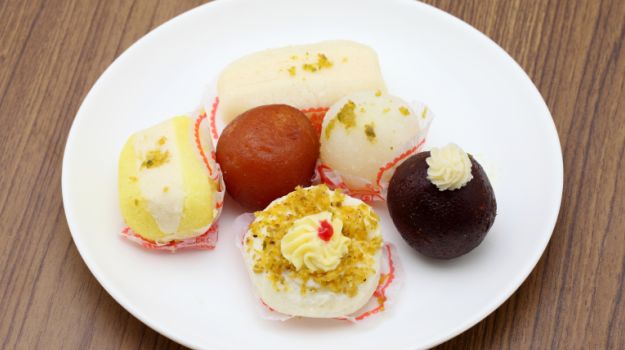
Celebrations are more subdued elsewhere in India. For instance, in Tamil Nadu, it is Goddess Shakti who is celebrated as part of the Batukamma Panduga festival, in which decorative towers of flowers are crafted; they also celebrate golu, the festival of dolls, which is again an ode to the goddesses. Women gift each other flowers, jewellery and betel nuts, leaves and coconuts. In Madhya Pradesh, devotees bathe in the sacred Shipra river and exchange sweets while in Ujjain, the beautiful Harsiddhi Mandir glows with lamps. In Delhi and parts of Punjab, devotees fast and perform special pujas called Mata ki Chowki.Food for the GodsSynonymous with the fun and frolic is the fasting (vrat). Typically, Hindu bastions frown upon a litany of foods during Navratri – meat, onion, garlic, certain grains, lentils, turmeric, asafoetida, mustard, fenugreek seeds, garam masala and dhania powder are all condemned. The faithful multitudes use fasts for purifying the self and paying obeisance to a higher Truth. Many just have fruit, milk and sago (sabudana)."This is the perfect time for an inward cleansing and discipline, both physical and mental," says my Gujarati neighbour, Sarla Kapadia. "It is that time of the year when I bring out the energy-giving sabudana – crisp Sabudana Vada and steaming Sabudana Khichdi – which is very popular in my household. I also make a Suran ni Khichdi (sweet potato khichdi) and Singhara ni Barfi. My kids also love the traditional Kuttu Puris that I serve with dahi."

Meanwhile, my cousins in Chennai tell me of the delicious sundal menu that is prepared for guests - chickpeas, green gram, dry green peas, sweet corn and cowpeas are some of the traditional Navratri offerings. Madhur Mhamankar, my Maharashtrian friend, has a few generations-old dishes that she prepares for the vrat. "My family has always prepared Sweet Potato Halwa. Sometimes, we also make Papaya Halwa. Potato, yam and sweet potato chips are naturally popular with my little son but I also make healthier options like Sabudana Thalipeeth and fruit chaat."All this culminates in Dusshera's festivities and feasting, the perfect end to Navratri's abstinence.Disclaimer:The opinions expressed within this article are the personal opinions of the author. NDTV is not responsible for the accuracy, completeness, suitability, or validity of any information on this article. All information is provided on an as-is basis. The information, facts or opinions appearing in the article do not reflect the views of NDTV and NDTV does not assume any responsibility or liability for the same.
Advertisement
